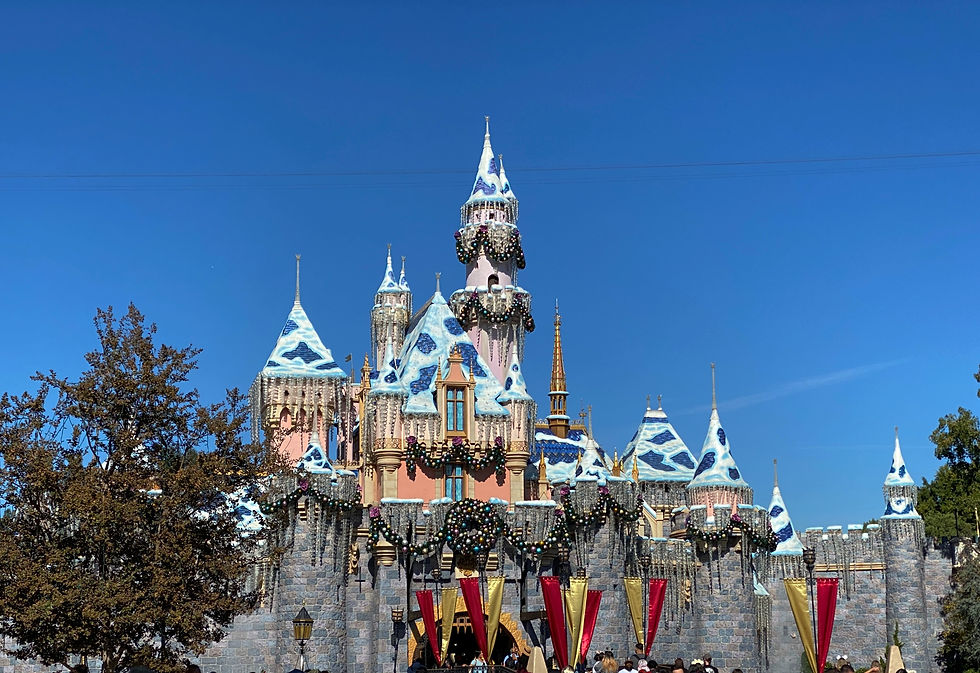Putting art history to work in the world!
- Dr. Lauren Kilroy-Ewbank
- Sep 9, 2024
- 3 min read

Art history is often viewed as a niche academic field, but I see it as a living, breathing discipline that shapes how we connect with the world.

I’m passionate about making art history accessible and relevant. I spent several decades in academia, writing academic articles and books.
Along the way, I realized that art history's richness could—and should—extend far beyond academia and the walls of a university classroom. So, while working as an academic professor, I began to find ways to experiment with making art history more accessible to more people.

But ultimately, I felt I could be doing more, and I decided to open a new door that set me on my current path. I didn't want to primarily make accessible materials for teachers and students—though I, of course, still fiercely support them. I wanted to try to connect with audiences outside of educational realms, or at least at the college level! It's been a rewarding challenge, allowing me to see how I can put art history to work in the world.

Putting art history to work in the world
One of the most exciting ways I do this is by exploring the intersection of art history and popular culture. This includes—but is not limited to—looking for connections between art and Disney Parks. Many people in the world adore Disney and are eager to look for hidden Mickeys or learn the history behind attractions. It's been exciting to see how digging into the art and architecture of the Parks (and movies!) adds something new.

Disneyland, for example, might be seen as just a fun theme park, but it’s a treasure trove of art and historical references. Most visitors come for the rides (or attractions in Disney terms!) and the nostalgia, but a deep connection to historical and cultural narratives lies beneath the surface.

Each themed area in Disneyland draws inspiration from distinct cultural periods. For example, the iconic Sleeping Beauty Castle is a modern interpretation of Gothic and Romanesque architectural styles, providing visitors with a whimsical yet historically rooted experience. On the other hand, Adventureland's design blends colonial and post-colonial exoticism, reflecting centuries of Western art and literature focused on exploration and discovery. It's just as fantastical in some ways as Fantasyland itself, which is an important historical legacy in the United States and beyond.
Walt Disney himself was committed to the idea that Disneyland was educational. He also wanted it to entertain.

Uncovering these hidden layers of meaning at Disneyland isn’t just about adding an intellectual twist to a day at the park—it's about helping people see the familiar in a new light. It’s about understanding how art and history influence even the most unexpected places in our lives—like a theme park. When I explore the painting of a reclining nude pirate on Disneyland’s Pirates of the Caribbean ride or consider the careful use of color and perspective in different themed areas, I’m connecting these visual elements to broader cultural narratives that continue to shape our world today. For example, the reclining nude on Pirates connects to the longer history of images of female reclining nudes from Greco-Roman antiquity to the Italian Renaissance and beyond.
Art history at work beyond Disneyland: The Americas

But my work doesn’t stop at Disney art history. For anyone who doesn't know me well (yet!), I am a scholar who has spent the past 25+ years focused on the art of the Ancient Americas (think Aztecs/Mexica and the Inka/Inca!) and the Spanish Americas and Spain (mainly 1400–1800). I've spent a lot of time focused on teaching and how to teach and different storytelling methods. Whether discussing the religious symbolism in a 15th-century altarpiece or exploring the cultural significance of a modern mural, my goal is to make these stories come alive and feel relevant to contemporary life.
I've worked collaboratively with many people, from other art historians, historians, and archaeologists to Indigenous Elders, community members, and artists. I've tried wherever possible to amplify other voices. I remain deeply committed to uplifting the stories and histories of peoples in the Americas, especially those of women like Sor Juana Inés de la Cruz, Mexica midwives and healers, Maya queens, and more.
I can support learning about the Americas with Disney art history, but I am also working on some other ways to do this. (More on that soon!).
Ultimately, my mission is to make art history come alive in the world around us. By putting art history to work, I hope to inspire others to see how it surrounds us daily.
Let's get to work!
留言